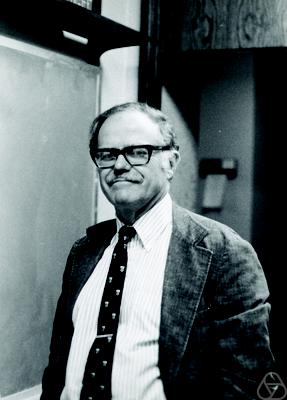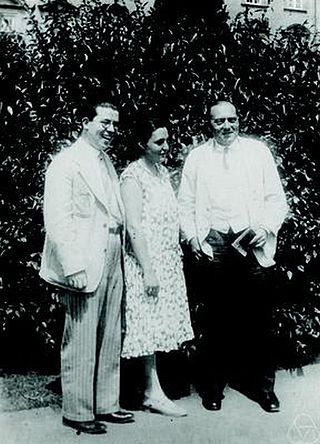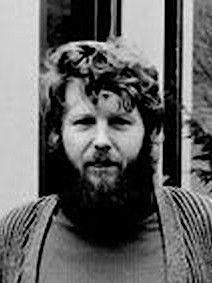Related Research Articles

In mathematics, Pontryagin duality is a duality between locally compact abelian groups that allows generalizing Fourier transform to all such groups, which include the circle group, the finite abelian groups, and the additive group of the integers, the real numbers, and every finite dimensional vector space over the reals or a p-adic field.
In mathematics, an H-space is a homotopy-theoretic version of a generalization of the notion of topological group, in which the axioms on associativity and inverses are removed.
In mathematics, a locally compact group is a topological group G for which the underlying topology is locally compact and Hausdorff. Locally compact groups are important because many examples of groups that arise throughout mathematics are locally compact and such groups have a natural measure called the Haar measure. This allows one to define integrals of Borel measurable functions on G so that standard analysis notions such as the Fourier transform and spaces can be generalized.
In functional analysis and related areas of mathematics, a Montel space, named after Paul Montel, is any topological vector space (TVS) in which an analog of Montel's theorem holds. Specifically, a Montel space is a barrelled topological vector space in which every closed and bounded subset is compact.

Alexandre Aleksandrovich Kirillov is a Soviet and Russian mathematician, known for his works in the fields of representation theory, topological groups and Lie groups. In particular he introduced the orbit method into representation theory. He is an emeritus professor at the University of Pennsylvania.

Béla Kerékjártó was a Hungarian mathematician who wrote numerous articles on topology.

Edwin Hewitt was an American mathematician known for his work in abstract harmonic analysis and for his discovery, in collaboration with Leonard Jimmie Savage, of the Hewitt–Savage zero–one law.

Kurt Schütte was a German mathematician who worked on proof theory and ordinal analysis. The Feferman–Schütte ordinal, which he showed to be the precise ordinal bound for predicativity, is named after him. He was the doctoral advisor of 16 students, including Wolfgang Bibel, Wolfgang Maaß, Wolfram Pohlers, and Martin Wirsing.
The Hausdorff−Young inequality is a foundational result in the mathematical field of Fourier analysis. As a statement about Fourier series, it was discovered by William Henry Young (1913) and extended by Hausdorff (1923). It is now typically understood as a rather direct corollary of the Plancherel theorem, found in 1910, in combination with the Riesz-Thorin theorem, originally discovered by Marcel Riesz in 1927. With this machinery, it readily admits several generalizations, including to multidimensional Fourier series and to the Fourier transform on the real line, Euclidean spaces, as well as more general spaces. With these extensions, it is one of the best-known results of Fourier analysis, appearing in nearly every introductory graduate-level textbook on the subject.
Vilmos Totik is a Hungarian mathematician, working in classical analysis, harmonic analysis, orthogonal polynomials, approximation theory, potential theory. He is a professor of the University of Szeged. Since 1989 he is also a part-time professor at the University of South Florida (Tampa).

Claude Lemaréchal is a French applied mathematician, and former senior researcher at INRIA near Grenoble, France.

Gottfried Maria Hugo Köthe was an Austrian mathematician working in abstract algebra and functional analysis.
Grundlagen der Mathematik is a two-volume work by David Hilbert and Paul Bernays. Originally published in 1934 and 1939, it presents fundamental mathematical ideas and introduced second-order arithmetic.
Jean-Louis Loday was a French mathematician who worked on cyclic homology and who introduced Leibniz algebras and Zinbiel algebras. He occasionally used the pseudonym Guillaume William Zinbiel, formed by reversing the last name of Gottfried Wilhelm Leibniz.
In mathematics, a topological group is called the topological direct sum of two subgroups and if the map

Ray Alden Kunze was an American mathematician who chaired the mathematics departments at the University of California, Irvine and the University of Georgia. His mathematical research concerned the representation theory of groups and noncommutative harmonic analysis.

Eberhard Freitag is a German mathematician, specializing in complex analysis and especially modular forms.
In functional analysis, a discipline within mathematics, a locally convex topological vector space (TVS) is said to be infrabarrelled if every bounded barrel is a neighborhood of the origin.
In functional analysis, a topological homomorphism or simply homomorphism is the analog of homomorphisms for the category of topological vector spaces (TVSs). This concept is of considerable importance in functional analysis and the famous open mapping theorem gives a sufficient condition for a continuous linear map between Fréchet spaces to be a topological homomorphism.
In functional analysis and related areas of mathematics, quasibarrelled spaces are topological vector spaces (TVS) for which every bornivorous barrelled set in the space is a neighbourhood of the origin. Quasibarrelled spaces are studied because they are a weakening of the defining condition of barrelled spaces, for which a form of the Banach–Steinhaus theorem holds.
References
- ↑ Kalte, P.M.; Nemeh, K.H. (2003). American Men & Women of Science: Q-S. Thomson/Gale. ISBN 9780787665296 . Retrieved 2015-06-25.
- ↑ Faires, Barbara (March 2010), "Yueh-Gin Gung and Dr. Charles Y. Hu Award for 2010 to Kenneth A. Ross for Distinguished Service to Mathematics", The American Mathematical Monthly , 117 (3): 195–197, doi:10.4169/000298910X480054, S2CID 22602688 .